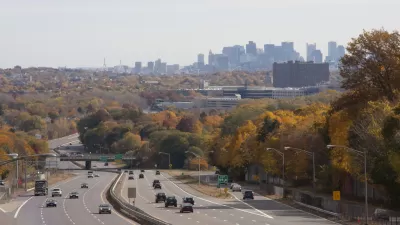The sprawling mass of suburbia has been a disaster for the environment. But now smaller, denser cities herald a renaissance in city living.

“Between the 1970s and early 21st century, most cities went through a period of what urban planners call de-densification. Think of it as middle-aged spread: As societies became more affluent and car-based, low-density housing developments on the outskirts of cities provided larger homes for people who wanted more space but to still be within driving distance of jobs and shops. The growth of suburbia was the predominant trend for most cities all over the world in the second half of the 20th century, says Chiara Cortinovis, an urban planning researcher at Humboldt University of Berlin,” writes Matt Reynolds for Wired.
“When Cortinovis charted the density trends of 331 European cities between 2006 and 2018, that’s exactly the pattern she observed for the first half of that time period. Sixty percent of the cities she studied got less dense between 2006 and 2012. But in the following six years this dynamic suddenly flipped. Between 2012 and 2018, only a third of the cities in the sample were constantly de-densifying, and almost all of those cities were either in eastern Europe or Iberia where city populations are mostly shrinking while suburbia keeps expanding. Instead the picture across the majority of central, northern, and western Europe showed that cities were getting denser. Populations were growing, but most of these people weren’t moving into suburban homes with garden plots and double garages. They were moving into the inner city.”
FULL STORY: Europe’s Cities Are Getting More Crowded—That’s a Good Thing

Alabama: Trump Terminates Settlements for Black Communities Harmed By Raw Sewage
Trump deemed the landmark civil rights agreement “illegal DEI and environmental justice policy.”

Study: Maui’s Plan to Convert Vacation Rentals to Long-Term Housing Could Cause Nearly $1 Billion Economic Loss
The plan would reduce visitor accommodation by 25% resulting in 1,900 jobs lost.

Planetizen Federal Action Tracker
A weekly monitor of how Trump’s orders and actions are impacting planners and planning in America.

Waymo Gets Permission to Map SF’s Market Street
If allowed to operate on the traffic-restricted street, Waymo’s autonomous taxis would have a leg up over ride-hailing competitors — and counter the city’s efforts to grow bike and pedestrian on the thoroughfare.

Parklet Symposium Highlights the Success of Shared Spaces
Parklets got a boost during the Covid-19 pandemic, when the concept was translated to outdoor dining programs that offered restaurants a lifeline during the shutdown.

Federal Homelessness Agency Places Entire Staff on Leave
The U.S. Interagency Council on Homelessness is the only federal agency dedicated to preventing and ending homelessness.
Urban Design for Planners 1: Software Tools
This six-course series explores essential urban design concepts using open source software and equips planners with the tools they need to participate fully in the urban design process.
Planning for Universal Design
Learn the tools for implementing Universal Design in planning regulations.
Caltrans
Smith Gee Studio
Institute for Housing and Urban Development Studies (IHS)
City of Grandview
Harvard GSD Executive Education
Toledo-Lucas County Plan Commissions
Salt Lake City
NYU Wagner Graduate School of Public Service





























